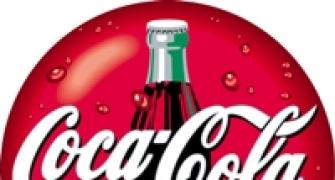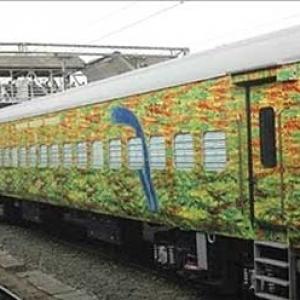 Coca-Cola India's volume growth in the second quarter slowed partly because of an increase in prices and also due to a mild summer.
Coca-Cola India's volume growth in the second quarter slowed partly because of an increase in prices and also due to a mild summer.To address this issue, the beverage major is focusing on changing consumption patterns to ensure it hedges risks from the vagaries of weather and seasonality of the business.
Atul Singh, the India and South West Asia president and CEO, shares his new challenges Surajeet Das Gupta and Priyanka Singh and his bid to build products to address the market at the bottom of the pyramid.
Edited excerpts:
Your volume this quarter grew by just eight per cent as against 22 per cent in the previous year's quarter, whereas the growth figure in China is 21 per cent and Mexico 10 per cent. When the per capita consumption is still low in India, does this low volume growth worry you?
If you look at our growth, we have had 20 consecutive quarters of growth. However, we had taken pricing up for some of our products last quarter.
For instance, the 300-ml price went up by 20 per cent from Rs. 10 to 12. When we take pricing up in our industry, it takes some quarters for volumes to stabilise.
Plus, we had a lot of rains this quarter versus the same period last year. During the second quarter, which is the warmest, there is an increased consumption of glass bottles outside home. When it is raining, the outside consumption dips, which impacts our sales.
This means the correction in pricing has made a substantial impact on your sales. How will you deal with this situation, as pricing pressure will continue to happen in the country as raw material costs go up?
We do analyses of our products. Certain packs get impacted while others remain less affected. So, within our portfolio we have several packs that have grown substantially. We have multiple packs which we can price differently in different channels.
But eventually your volume growth has slowed down?
If the weather hadn't been the way it is, we would have not seen such slow growth. We have very high seasonality in India.
The temperature and precipitation impact on the sales in very high in seasonal markets like India. But this is changing.
Our growth rates in other quarters are higher because the consumer might be having it indoors even when it is raining outside. Small price increases don't have that much of impact; larger increase impacts sales.
So, what you mean is that despite all the marketing efforts and investments, the weather and monsoon determine your revenues. After all, these three months constitute 30-40 per cent of your sales.
The sales in this quarter constitute less than 30 per
cent of our volumes. Ten years ago, it was over 60 per cent, but now it's not even half of that.
Ideally, we want each quarter to constitute 25 per cent to our revenue but it's going to be a long time before it happens because consumption will take time.
Today, we are focusing on various channels like movie-halls, malls, eat-and-drink channels to boost in-home or in-premise consumption, which is not impacted by weather conditions. On an average, today about 40 per cent consumption happens in homes.
Our focus now is to get this number up. Fifteen years ago, in-home consumption of soft drinks was only 10 per cent.
The Indian fast moving consumer goods sector is looking at the bottom of the pyramid and how to deliver products at a lower cost. How do you plan to address this market with cheaper products?
More than 700 million people in India live in rural areas. A human being needs two litres of fluid per day.
We see a lot of opportunity as the consumers there too have a right to the choose products we consume in cities. So, the opportunity and challenge are how we offer the similar taste in beverages to people who can spend Rs. 3-5 on it.
A lot of your raw material like orange pulp is imported from Brazil. Are you looking at ways to make the country into a sourcing centre for your global requirements in any of these products?
Yes, we are. We have imported about 10,000 saplings from Brazil and are growing orange trees in collaboration with Jain Irrigation Systems in Maharasthra.
The Cutrale group of Brazil, is the largest orange producers in the world, is providing the technology. If it's successful, the idea is to grow these trees in India with the help of irrigation experts.
We will convert them into pulp and this can cater to our local needs. Currently, Coke globally gets its orange pulp supplies from Brazil, the US and China. India could be the fourth.
Soft drinks have been associated with health issues - they are considered not good for children. Your competitors are addressing the issue by changing formulation to make products healthier. How do you address this contentious issue in India?
All our products are safe, none of them are unhealthy. There are products with zero calories, lighter in calories, products which are juice based, dairy-based and water-based, and also products with vitamins and minerals in it. So, we give consumers a lot of choices.
What are the investments you have already made in India?
We have invested close to $1.35 billion in India (every year, we spend about $100 million here). We keep investing in more lines, more people, coolers, bottlers' system investment, trucks, equipment, etc.
About 65 per cent of investments is through company-owned bottling plants in India.










